 FEATURES2: 2012 ASLA Professional Awards-General Design
FEATURES2: 2012 ASLA Professional Awards-General Design
AWARD OF EXCELLENCEA Green Sponge for a Water-Resilient City: Qunli Stormwater ParkTurenscape and Peking University, BeijingHONOR AWARDCanada’s Sugar BeachClaude Cormier + Associés Inc., MontréalLafayette Greens: Urban Agriculture, Urban Fabric, Urban SustainabilityKenneth Weikal Landscape Architecture, Farmington Hills, MichiganQuarry Garden in Shanghai Botanical GardenTHUPDI and Tsinghua University, BeijingArizona State University Polytechnic Campus: New Academic ComplexTen Eyck Landscape Architects, Inc., Phoenix200 5th Avenue Landworks Studio, Inc., BostonPowell Street PromenadeHood Design, Oakland, CaliforniaTudela-Culip (Club Med) Restoration Project in ‘Cap de Creus’ CapeEMF Landscape Architecture and Ardévols Associates ConsultantsShangri La Botanical GardenJeffrey Carbo Landscape Architects, Alexandria, LouisianaWinnipeg Skating SheltersPatkau Architects, Inc. Vancouver, British Columbia, Canada National 9/11 MemorialPWP Landscape Architecture, Berkeley, California Sunnylands Center & GardensThe Ofce of James Burnett, Solana Beach, California
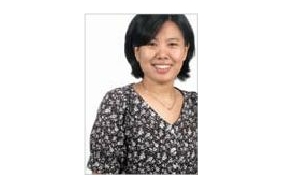 여러 나라의 ‘다른 마을 이야기’를 만났던 축제는 끝나고
여러 나라의 ‘다른 마을 이야기’를 만났던 축제는 끝나고
지난 8월 22일부터 24일까지 3일간 코엑스와 서울대학교 환경대학원 등에서 열린 ‘제8회 환태평양 커뮤니티디자인 네트워크 국제컨퍼런스’에서 여러 나라의 ‘다른 마을 이야기’를 만날 수 있었습니다. 마을의 관점에서 현재를 진단하고 미래를 제시하는 ‘환태평양 커뮤니티디자인 네트워크 국제컨퍼런스’는 1998년에 시작해 2~3년 간격으로 개최되어왔고 올해는 서울에서 개최되었습니다. 올해의 주제는 ‘그린 커뮤니티디자인’이었습니다. 커뮤니티디자인과 관련된 분야에서 공부하고 일하시는 70여 분이 다양한 사례를 들려주셨고, 500여 분 정도가 참여해 주시는 등 행사는 많은 관심을 받았고, 잘 끝났습니다. 커뮤니티디자인이나, 그린커뮤니티디자인이나 그리 익숙하지 않은 단어일 텐데, 이렇게 많은 호응을 받았던 이유는 어떤 변화 때문이지 않을까 싶습니다. 첫날, 기조연설을 하셨던 조한혜정 교수님께서 진단하셨듯이 ‘우리는 지금 포스트 성장 시대, 포스트 개발 시대, 글로벌 경쟁 시대, 고용 없는 성장, 고실업 시대, 위험 사회risk society 등등의 이름으로 불리는 탈근대적 위기 상황을 살아가고’ 있고, 또 이영범 교수님이 진단하셨듯이 ‘재개발과 재건축이 주도해 온 도시행정이 부동산시장의 붕괴로 인해 더 이상 기능하지 못하게’ 되었습니다. 이에 대한 대안으로 조한혜정 교수님은 ‘도시적 마을’을, 이영범 교수님은 ‘마을만들기’를 말씀하셨습니다. 두 분이 말씀하신 대안들은 이미 실천되고 있습니다. 서울시에서 진행하고 있는 ‘마을공동체’ 사업, 수원시에서 진행하고 있는 ‘마을 르네상스’라는 정책브랜드 등등이 그에 대한 예가 될 것입니다. 정책적 접근 때문인지 모르겠지만 실천의 현장에서도 그러한 변화를 체감할 수 있습니다. 그런데 커뮤니티디자인, 마을만들기 등에 예전부터 관심을 두어왔던 사람으로서, 마을을 도시 관리의 중심에 두는 이러한 변화가 좋기도 하지만 우려되는 바도 있습니다. 먼저 조한혜정 교수님께서도 지적하셨지만 토건 중심의 개발시대에 대한 대안으로 이야기되는 마을공동체, 마을만들기, 커뮤니티디자인 등의 접근들 또한 속도전으로, 성과 위주로 진행되고 있는 건 아닌가 하는 것입니다. 충분한 시간을 갖고 진행해야 할 텐데 조바심을 갖는 건 아닌가 합니다. 소통과 과정, 관계를 키워드로 삼는 이러한 접근들은 시간이 많이 필요합니다. 더욱이 우리는 변화의 시기에 있기에 주체별로, 입장별로 새로운 접근을 받아들이는데 시간차가 있을 수밖에 없는데, 그것에 대한 인정이 부족하지 않나 싶습니다. 어떤 마을에서 행정이 주체가 되어 마을만들기와 관련된 사업을 진행하는데, 초기에는 주민들이 동의했다고 합니다. 공동체 공간물리적, 상징적을 만들고 함께 ‘어떤 마을일을, 어떻게’ 해나갈지를 계획하고 실천방향을 찾는 일은 좋은 일일 뿐만 아니라 즐거우니까요. 그런데 계속 주민들에게 사업의 내용을 알리고 의견을 묻는 과정에서 동의에서 반대로 돌아서는 분들이 생겨났다고 합니다. 예전 같으면 그냥 할 일을 이제는 물으니, 그것도 너무 자주 물으니, 무언가 다른 의도가 있는 건 아닌가? 다른 속셈이 있는 건 아닌가?
의심하는 것이죠. 그리고 다른 사례는 어느 지역에서 물리적 공간계획을 진행하면서 주민들한테 공간에 대한 비전과 조성 방향에 대해 여쭈어보는데, 몇몇 주민들은 “이미 너희가 안을 갖고 있으면서 뭘 물어보느냐”, 그리고 “우리가 이야기해봤자 들어주지도 않을 것이면서”하는 회의적 반응을 보이셨습니다. 소위 ‘서랍에 넣어둔 너희의 계획안을 드러내라’는 거죠. 이제까지 블랙박스 같던 의사결정 과정을 열었는데 주민들한테는 익숙하지 않은 것이며, 그래서 ‘여는 이유’를 오히려 궁금해들 하십니다. ‘소통과 민주적 과정이 중요하니까요’라는 기본 원칙이 그들에게 낯설기 때문이겠지요. 그렇기에 같은 출발선에 서기까지도 많은 시간이 필요합니다. 그런데 또 그런 시간은 사람들을 지치게 하기도 합니다. 시간 속에서 서로 간의 입장과 의견을 조율하는 방식을 배우고 다양한 경험으로 실천방식을 정교화 해야 하는데 초기의 어긋남으로 의욕을 상실하기도 하고 ‘우리나라는 아직 멀었어, 의식 수준이 아직 낮아’라고 쉽게 낙담하기도 합니다. 이 또한 우려되는 바이기도 합니다. 그래서 지역의 쓰레기 문제같이 작은 아주 일상적인 것부터 민주주의의 원리, 주민참여의 원리에 입각해 푸는 훈련을 하면서 작은 성과들을 누적하고, 그러다 보면 같은 출발선에 서게 될 뿐만 아니라 실천성도 높아지고 실천의 범위도 넓어지지 않을까 싶습니다. 그래서 축제는 잘 끝났지만 숙제는 많아진 듯합니다. 하지만 ‘잘 되겠지’라고 낙관도 하게 됩니다. 축제는 해답의 실마리도 주었기 때문입니다. 둘째 날23일에는 국내·외 70여 명의 전문가들이 8개 세션으로 나누어 ‘커뮤니티디자인을 둘러싼 8가지 이슈’라는 주제로 발표를 해주셨습니다. 8개의 세션 주제는 ‘세션1 커뮤니티디자인의 새로운 지평, 세션2 가드닝에서 도시농업까지, 세션3 공동체리더십과 거버넌스, 세션4 녹색디자인과 지속가능공동체, 세션5 커뮤니티디자인과 장소만들기, 세션6 공동체 활성화와 마을계획, 세션7 커뮤니티 정치와 민주주의, 세션8 커뮤니티 비즈니스와 사회적기업’이었습니다. 주제 자체 또한 커뮤니티디자인의 흐름을 읽고 특징을 파악하는데 좋은 이정표이지 싶습니다. 여하튼 발표들은 흥미로웠고, 여러 나라에서 일어나는 여러 ‘마을 일’을 한 자리에서 만난다는 것, 그 자체로도 좋았습니다. 개인적으로는 국외 사례보다는 국내 사례가 흥미로웠습니다. 변화의 시기에 있는 만큼 과정은 역동적이었고 담고 있는 이야기도 풍부했습니다. 그리고 지역에서의 예술을 꿈꾸며 한 마을에 들어갔다가 만난 여러 가지 어려움이나, 주민들과 ‘으싸으싸’ 열었던 사회적기업이 겪은 고초 등의 사례들을 통해 항상 성공적이지는 않다는 사실도 발견할 수 있었습니다. 하지만 실패라고 말할 수는 없을 듯합니다. 오히려 시행착오에서 더 많이 배우게 되기 때문입니다. 게다가 어려움에도 ‘불구하고’ 오랫동안 현장에서 일해 오셨던 분들이 남긴 발자국과 그분들이 보여주신 열정이 있으니까요. 그래서 우리가 겪고 있는 변화가 낯설고 우려되는 바도 많지만 잘 되리라는 기대를 하게 됩니다.
Starting on August 22nd, “The 8th International Conference of the Pacic Rim Community Design Network International Conference” was held at COEX and Seoul National University Graduate School of Environmental Studies for 3 days, where I could listen to the different stories of villages from all around the globe. Evaluating the current situation and proposing the direction for the future, the conference has taken place every 2 or 3 years since 1998. The main subject of this year’s gathering was ‘Green Community Design’. While the concept of community design or green community design is little known to public, the conference could be successful since, I believe, there has been some sort of change. As Professor Cho Hae Joang pointed out in her keynote speech on the rst day, ‘we are now confronted with the critical period of postmodern era, which is called such diverse names as post-growth era, post-development era, era of global competition, job-loss recovery, era of high unemployment, risk society, and so forth’, and as Professor Lee Young Bum suggested, ‘the urban administration that has been driven by redevelopment and rebuilding projects has lost its dynamics due to the collapse of real estate market’. As an alternative approach, Prof. Cho mentioned ‘urban village’, and Prof. Lee referred to ‘village building’. The strategies proposed by the two scholars have already been accepted and employed. Among the examples are ‘Village Community’ project carried out by the Seoul Metropolitan Government and ‘Village Renaissance’, the title of the long-term policy adopted by Suwon City Government. Thanks to the change in the policy and its implementation, you might feel the difference on various sites where actions are taking place. However, as I have long been interested in community design and village building, I have mixed feelings about the situation where for urban maintenance, more and more emphasis is put on villages and their management. First, as Prof. Cho Hae Joang, there is a growing concern that village community, village building, or community design, which have recently attracted much attention as alternatives to the development process driven mainly by civil engineering and construction, could be centered around so called speed battles or performance oriented strategies. This kind of approach takes a lot of time since communication, process, and relationship are extremely important as the key elements. Furthermore, we should understand that as we are living in a transition period, there often is a gap among people evaluating and adopting this new strategy.
For example, when a local government started to play a leading role in conducting a project of village building, most of the villagers agreed to the idea. Surely, it is not only desirable but also enjoyable to build public space for community together, both physical and symbolic, and discuss and determine ‘what work should be done and how it should be carried out.’ However, as the administration continued to inform people of the content of the project and ask for their own opinions, some began to disagree and face away. They might have worried that there could be some hidden agenda or secret design when asked the same questions again and again. There is another example. When asked about the vision and direction for the design of the physical space, several villagers responded rather skeptically saying, They just wanted to know what the plan was like. They were not familiar with the open decision-making process and curious about the reason why they had to participate. The principle of ‘communication and democratic process’ is not much persuasive in this context. Thus it takes time to stand at the same starting point together. If fact, as time passes, people often get exhausted. Yes, it takes time, a lot of time to learn how to coordinate different perspectives and ideas and sophisticate detailed action plans through trial and error, but we become demotivated, faced with difculties at the initial stage, and conclude that we are still far behind. This is why we should pay attention to the problems in our daily life such as waste disposal at a local level. Trying to gure out solutions to these problems, we will slowly learn the basics of democracy and community involvement, and nally stand at the same starting line, broadening the range of work we can do together. The conference is over, but we have many things to do. Sometimes I think that at the end of the day, everything’s going to be okay. Why? I guess I’ve found a clue. These will serve as guidance by which to appreciate community design and its characteristics. The presentations themselves were quite interesting, and the stories of ‘village affairs’ in different countries around the world were inspirational. I was more interested in the Korean cases than foreign practices. They were dynamic and full of exciting stories. I also realized that we could not succeed all the time. There is either disappointment or frustration, but we never call it failure. We learn far more from trial and error. We can follow the footsteps of our predecessors who in spite of many obstacles have worked hard and showed their passion. I hope and believe that it will work out in the end.
 FEATURES2: 2012 ASLA Professional Awards-General Design
AWARD OF EXCELLENCEA Green Sponge for a Water-Resilient City: Qunli Stormwater ParkTurenscape and Peking University, BeijingHONOR AWARDCanada’s Sugar BeachClaude Cormier + Associés Inc., MontréalLafayette Greens: Urban Agriculture, Urban Fabric, Urban SustainabilityKenneth Weikal Landscape Architecture, Farmington Hills, MichiganQuarry Garden in Shanghai Botanical GardenTHUPDI and Tsinghua University, BeijingArizona State University Polytechnic Campus: New Academic ComplexTen Eyck Landscape Architects, Inc., Phoenix200 5th Avenue Landworks Studio, Inc., BostonPowell Street PromenadeHood Design, Oakland, CaliforniaTudela-Culip (Club Med) Restoration Project in ‘Cap de Creus’ CapeEMF Landscape Architecture and Ardévols Associates ConsultantsShangri La Botanical GardenJeffrey Carbo Landscape Architects, Alexandria, LouisianaWinnipeg Skating SheltersPatkau Architects, Inc. Vancouver, British Columbia, Canada National 9/11 MemorialPWP Landscape Architecture, Berkeley, California Sunnylands Center & GardensThe Ofce of James Burnett, Solana Beach, California
FEATURES2: 2012 ASLA Professional Awards-General Design
AWARD OF EXCELLENCEA Green Sponge for a Water-Resilient City: Qunli Stormwater ParkTurenscape and Peking University, BeijingHONOR AWARDCanada’s Sugar BeachClaude Cormier + Associés Inc., MontréalLafayette Greens: Urban Agriculture, Urban Fabric, Urban SustainabilityKenneth Weikal Landscape Architecture, Farmington Hills, MichiganQuarry Garden in Shanghai Botanical GardenTHUPDI and Tsinghua University, BeijingArizona State University Polytechnic Campus: New Academic ComplexTen Eyck Landscape Architects, Inc., Phoenix200 5th Avenue Landworks Studio, Inc., BostonPowell Street PromenadeHood Design, Oakland, CaliforniaTudela-Culip (Club Med) Restoration Project in ‘Cap de Creus’ CapeEMF Landscape Architecture and Ardévols Associates ConsultantsShangri La Botanical GardenJeffrey Carbo Landscape Architects, Alexandria, LouisianaWinnipeg Skating SheltersPatkau Architects, Inc. Vancouver, British Columbia, Canada National 9/11 MemorialPWP Landscape Architecture, Berkeley, California Sunnylands Center & GardensThe Ofce of James Burnett, Solana Beach, California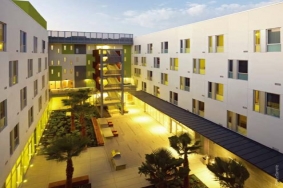 FEATURES2: 2012 ASLA Professional Awards-Residential Design
AWARD OF EXCELLENCEDrs. Julian and Raye Richardson ApartmentsAndrea Cochran Landscape Architecture, San Francisco HONOR AWARDQuaker Smith Point ResidenceH. Keith Wagner Partnership, Burlington, VermontQuattro by SansiriTROP Company Limited, Ladprao, Thailand New Century Garden: A Garden of Water and LightSteve Martino and Associates, Phoenix Malinalco Private Residence Grupo De Diseño Urbano, S. C., Mexico City Maple Hill Residence Stephen Stimson Associates Landscape Architects, Cambridge, Massachusetts Reordering Old QuarryReed Hilderbrand LLC, Watertown, MassachusettsUrban SpringBionic, San Francisco
FEATURES2: 2012 ASLA Professional Awards-Residential Design
AWARD OF EXCELLENCEDrs. Julian and Raye Richardson ApartmentsAndrea Cochran Landscape Architecture, San Francisco HONOR AWARDQuaker Smith Point ResidenceH. Keith Wagner Partnership, Burlington, VermontQuattro by SansiriTROP Company Limited, Ladprao, Thailand New Century Garden: A Garden of Water and LightSteve Martino and Associates, Phoenix Malinalco Private Residence Grupo De Diseño Urbano, S. C., Mexico City Maple Hill Residence Stephen Stimson Associates Landscape Architects, Cambridge, Massachusetts Reordering Old QuarryReed Hilderbrand LLC, Watertown, MassachusettsUrban SpringBionic, San Francisco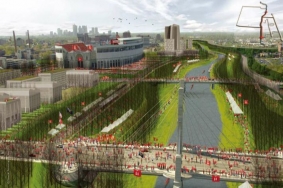 FEATURES2: 2012 ASLA Professional Awards-Analysis and Planning
AWARD OF EXCELLENCEThe One Ohio State Framework PlanSasaki Associates, Inc., Watertown, Massachusetts HONOR AWARDGovernors island Park and Public Space Master PlanWest 8 Urban Design & Landscape Architecture, P. C., New York CityWusong Riverfront: Landscape infrastructure Pilot ProjectSWA Group, Sausalito, CaliforniaCore Area of Lotus Lake National Wetland Park Landscape PlanningBeijing Tsinghua Urban Planning & Design Institute, Beijing, ChinaCoastal Roulette: Planning Resilient Communities for Galveston BaySWA Group, HoustonNanhu: Farm Town in the Big CitySWA Group, San FranciscoA Strategic Master Plan for the Dead SeaSasaki Associates, Inc., Watertown, MassachusettsSW Montgomery Green Street: Connecting the West Hills to the Willamette RiverNevue Ngan Associates, Portland, OregonRed Mountain / Green Ribbon — The Master Plan for Red Mountain ParkWRT, Philadelphia
FEATURES2: 2012 ASLA Professional Awards-Analysis and Planning
AWARD OF EXCELLENCEThe One Ohio State Framework PlanSasaki Associates, Inc., Watertown, Massachusetts HONOR AWARDGovernors island Park and Public Space Master PlanWest 8 Urban Design & Landscape Architecture, P. C., New York CityWusong Riverfront: Landscape infrastructure Pilot ProjectSWA Group, Sausalito, CaliforniaCore Area of Lotus Lake National Wetland Park Landscape PlanningBeijing Tsinghua Urban Planning & Design Institute, Beijing, ChinaCoastal Roulette: Planning Resilient Communities for Galveston BaySWA Group, HoustonNanhu: Farm Town in the Big CitySWA Group, San FranciscoA Strategic Master Plan for the Dead SeaSasaki Associates, Inc., Watertown, MassachusettsSW Montgomery Green Street: Connecting the West Hills to the Willamette RiverNevue Ngan Associates, Portland, OregonRed Mountain / Green Ribbon — The Master Plan for Red Mountain ParkWRT, Philadelphia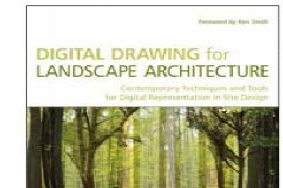 FEATURES2: 2012 ASLA Professional Awards-Communications
AWARD OF EXCELLENCEDigital Drawing for Landscape Architecture: Contemporary Techniques and Tools for Digital Representation in Site DesignBradley Cantrell and Wes Michaels HONOR AWARDAsphalt to Ecosystems: Design ideas for Schoolyard TransformationSharon Gamson Danks, Bay Tree Design, Inc. Landscape infrastructure: Case Studies by SWASWA Group, Los Angeles Landscape Urbanism Website and JournalSarah Peck What’s Out ThereThe Cultural Landscape Foundation
FEATURES2: 2012 ASLA Professional Awards-Communications
AWARD OF EXCELLENCEDigital Drawing for Landscape Architecture: Contemporary Techniques and Tools for Digital Representation in Site DesignBradley Cantrell and Wes Michaels HONOR AWARDAsphalt to Ecosystems: Design ideas for Schoolyard TransformationSharon Gamson Danks, Bay Tree Design, Inc. Landscape infrastructure: Case Studies by SWASWA Group, Los Angeles Landscape Urbanism Website and JournalSarah Peck What’s Out ThereThe Cultural Landscape Foundation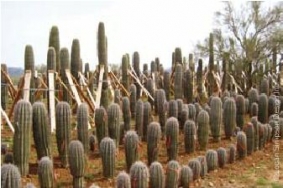 FEATURES2: 2012 ASLA Professional Awards-Research
HONOR AWARDArizona Department of Transportation Ironwood Tree Salvage and Saguaro Transplant Survivability StudiesLogan Simpson Design Inc. and Arizona Department of TransportationProductive Neighborhoods: A Case Study Based Exploration of Seattle Urban Agriculture ProjectsBerger Partnership, Seattle
FEATURES2: 2012 ASLA Professional Awards-Research
HONOR AWARDArizona Department of Transportation Ironwood Tree Salvage and Saguaro Transplant Survivability StudiesLogan Simpson Design Inc. and Arizona Department of TransportationProductive Neighborhoods: A Case Study Based Exploration of Seattle Urban Agriculture ProjectsBerger Partnership, Seattle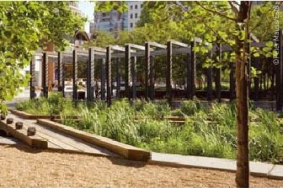 FEATURES2: 2012 ASLA Professional Awards-Landmark Award
AWARD OF EXCELLENCEVillage of Yorkville ParkKen Smith Landscape Architect, Landscape Architect of Record: Schwartz Smith Meyer Landscape Architects, Inc.
FEATURES2: 2012 ASLA Professional Awards-Landmark Award
AWARD OF EXCELLENCEVillage of Yorkville ParkKen Smith Landscape Architect, Landscape Architect of Record: Schwartz Smith Meyer Landscape Architects, Inc. 여러 나라의 ‘다른 마을 이야기’를 만났던 축제는 끝나고
지난 8월 22일부터 24일까지 3일간 코엑스와 서울대학교 환경대학원 등에서 열린 ‘제8회 환태평양 커뮤니티디자인 네트워크 국제컨퍼런스’에서 여러 나라의 ‘다른 마을 이야기’를 만날 수 있었습니다. 마을의 관점에서 현재를 진단하고 미래를 제시하는 ‘환태평양 커뮤니티디자인 네트워크 국제컨퍼런스’는 1998년에 시작해 2~3년 간격으로 개최되어왔고 올해는 서울에서 개최되었습니다. 올해의 주제는 ‘그린 커뮤니티디자인’이었습니다. 커뮤니티디자인과 관련된 분야에서 공부하고 일하시는 70여 분이 다양한 사례를 들려주셨고, 500여 분 정도가 참여해 주시는 등 행사는 많은 관심을 받았고, 잘 끝났습니다. 커뮤니티디자인이나, 그린커뮤니티디자인이나 그리 익숙하지 않은 단어일 텐데, 이렇게 많은 호응을 받았던 이유는 어떤 변화 때문이지 않을까 싶습니다. 첫날, 기조연설을 하셨던 조한혜정 교수님께서 진단하셨듯이 ‘우리는 지금 포스트 성장 시대, 포스트 개발 시대, 글로벌 경쟁 시대, 고용 없는 성장, 고실업 시대, 위험 사회risk society 등등의 이름으로 불리는 탈근대적 위기 상황을 살아가고’ 있고, 또 이영범 교수님이 진단하셨듯이 ‘재개발과 재건축이 주도해 온 도시행정이 부동산시장의 붕괴로 인해 더 이상 기능하지 못하게’ 되었습니다. 이에 대한 대안으로 조한혜정 교수님은 ‘도시적 마을’을, 이영범 교수님은 ‘마을만들기’를 말씀하셨습니다. 두 분이 말씀하신 대안들은 이미 실천되고 있습니다. 서울시에서 진행하고 있는 ‘마을공동체’ 사업, 수원시에서 진행하고 있는 ‘마을 르네상스’라는 정책브랜드 등등이 그에 대한 예가 될 것입니다. 정책적 접근 때문인지 모르겠지만 실천의 현장에서도 그러한 변화를 체감할 수 있습니다. 그런데 커뮤니티디자인, 마을만들기 등에 예전부터 관심을 두어왔던 사람으로서, 마을을 도시 관리의 중심에 두는 이러한 변화가 좋기도 하지만 우려되는 바도 있습니다. 먼저 조한혜정 교수님께서도 지적하셨지만 토건 중심의 개발시대에 대한 대안으로 이야기되는 마을공동체, 마을만들기, 커뮤니티디자인 등의 접근들 또한 속도전으로, 성과 위주로 진행되고 있는 건 아닌가 하는 것입니다. 충분한 시간을 갖고 진행해야 할 텐데 조바심을 갖는 건 아닌가 합니다. 소통과 과정, 관계를 키워드로 삼는 이러한 접근들은 시간이 많이 필요합니다. 더욱이 우리는 변화의 시기에 있기에 주체별로, 입장별로 새로운 접근을 받아들이는데 시간차가 있을 수밖에 없는데, 그것에 대한 인정이 부족하지 않나 싶습니다. 어떤 마을에서 행정이 주체가 되어 마을만들기와 관련된 사업을 진행하는데, 초기에는 주민들이 동의했다고 합니다. 공동체 공간물리적, 상징적을 만들고 함께 ‘어떤 마을일을, 어떻게’ 해나갈지를 계획하고 실천방향을 찾는 일은 좋은 일일 뿐만 아니라 즐거우니까요. 그런데 계속 주민들에게 사업의 내용을 알리고 의견을 묻는 과정에서 동의에서 반대로 돌아서는 분들이 생겨났다고 합니다. 예전 같으면 그냥 할 일을 이제는 물으니, 그것도 너무 자주 물으니, 무언가 다른 의도가 있는 건 아닌가? 다른 속셈이 있는 건 아닌가? 의심하는 것이죠. 그리고 다른 사례는 어느 지역에서 물리적 공간계획을 진행하면서 주민들한테 공간에 대한 비전과 조성 방향에 대해 여쭈어보는데, 몇몇 주민들은 “이미 너희가 안을 갖고 있으면서 뭘 물어보느냐”, 그리고 “우리가 이야기해봤자 들어주지도 않을 것이면서”하는 회의적 반응을 보이셨습니다. 소위 ‘서랍에 넣어둔 너희의 계획안을 드러내라’는 거죠. 이제까지 블랙박스 같던 의사결정 과정을 열었는데 주민들한테는 익숙하지 않은 것이며, 그래서 ‘여는 이유’를 오히려 궁금해들 하십니다. ‘소통과 민주적 과정이 중요하니까요’라는 기본 원칙이 그들에게 낯설기 때문이겠지요. 그렇기에 같은 출발선에 서기까지도 많은 시간이 필요합니다. 그런데 또 그런 시간은 사람들을 지치게 하기도 합니다. 시간 속에서 서로 간의 입장과 의견을 조율하는 방식을 배우고 다양한 경험으로 실천방식을 정교화 해야 하는데 초기의 어긋남으로 의욕을 상실하기도 하고 ‘우리나라는 아직 멀었어, 의식 수준이 아직 낮아’라고 쉽게 낙담하기도 합니다. 이 또한 우려되는 바이기도 합니다. 그래서 지역의 쓰레기 문제같이 작은 아주 일상적인 것부터 민주주의의 원리, 주민참여의 원리에 입각해 푸는 훈련을 하면서 작은 성과들을 누적하고, 그러다 보면 같은 출발선에 서게 될 뿐만 아니라 실천성도 높아지고 실천의 범위도 넓어지지 않을까 싶습니다. 그래서 축제는 잘 끝났지만 숙제는 많아진 듯합니다. 하지만 ‘잘 되겠지’라고 낙관도 하게 됩니다. 축제는 해답의 실마리도 주었기 때문입니다. 둘째 날23일에는 국내·외 70여 명의 전문가들이 8개 세션으로 나누어 ‘커뮤니티디자인을 둘러싼 8가지 이슈’라는 주제로 발표를 해주셨습니다. 8개의 세션 주제는 ‘세션1 커뮤니티디자인의 새로운 지평, 세션2 가드닝에서 도시농업까지, 세션3 공동체리더십과 거버넌스, 세션4 녹색디자인과 지속가능공동체, 세션5 커뮤니티디자인과 장소만들기, 세션6 공동체 활성화와 마을계획, 세션7 커뮤니티 정치와 민주주의, 세션8 커뮤니티 비즈니스와 사회적기업’이었습니다. 주제 자체 또한 커뮤니티디자인의 흐름을 읽고 특징을 파악하는데 좋은 이정표이지 싶습니다. 여하튼 발표들은 흥미로웠고, 여러 나라에서 일어나는 여러 ‘마을 일’을 한 자리에서 만난다는 것, 그 자체로도 좋았습니다. 개인적으로는 국외 사례보다는 국내 사례가 흥미로웠습니다. 변화의 시기에 있는 만큼 과정은 역동적이었고 담고 있는 이야기도 풍부했습니다. 그리고 지역에서의 예술을 꿈꾸며 한 마을에 들어갔다가 만난 여러 가지 어려움이나, 주민들과 ‘으싸으싸’ 열었던 사회적기업이 겪은 고초 등의 사례들을 통해 항상 성공적이지는 않다는 사실도 발견할 수 있었습니다. 하지만 실패라고 말할 수는 없을 듯합니다. 오히려 시행착오에서 더 많이 배우게 되기 때문입니다. 게다가 어려움에도 ‘불구하고’ 오랫동안 현장에서 일해 오셨던 분들이 남긴 발자국과 그분들이 보여주신 열정이 있으니까요. 그래서 우리가 겪고 있는 변화가 낯설고 우려되는 바도 많지만 잘 되리라는 기대를 하게 됩니다. Starting on August 22nd, “The 8th International Conference of the Pacic Rim Community Design Network International Conference” was held at COEX and Seoul National University Graduate School of Environmental Studies for 3 days, where I could listen to the different stories of villages from all around the globe. Evaluating the current situation and proposing the direction for the future, the conference has taken place every 2 or 3 years since 1998. The main subject of this year’s gathering was ‘Green Community Design’. While the concept of community design or green community design is little known to public, the conference could be successful since, I believe, there has been some sort of change. As Professor Cho Hae Joang pointed out in her keynote speech on the rst day, ‘we are now confronted with the critical period of postmodern era, which is called such diverse names as post-growth era, post-development era, era of global competition, job-loss recovery, era of high unemployment, risk society, and so forth’, and as Professor Lee Young Bum suggested, ‘the urban administration that has been driven by redevelopment and rebuilding projects has lost its dynamics due to the collapse of real estate market’. As an alternative approach, Prof. Cho mentioned ‘urban village’, and Prof. Lee referred to ‘village building’. The strategies proposed by the two scholars have already been accepted and employed. Among the examples are ‘Village Community’ project carried out by the Seoul Metropolitan Government and ‘Village Renaissance’, the title of the long-term policy adopted by Suwon City Government. Thanks to the change in the policy and its implementation, you might feel the difference on various sites where actions are taking place. However, as I have long been interested in community design and village building, I have mixed feelings about the situation where for urban maintenance, more and more emphasis is put on villages and their management. First, as Prof. Cho Hae Joang, there is a growing concern that village community, village building, or community design, which have recently attracted much attention as alternatives to the development process driven mainly by civil engineering and construction, could be centered around so called speed battles or performance oriented strategies. This kind of approach takes a lot of time since communication, process, and relationship are extremely important as the key elements. Furthermore, we should understand that as we are living in a transition period, there often is a gap among people evaluating and adopting this new strategy. For example, when a local government started to play a leading role in conducting a project of village building, most of the villagers agreed to the idea. Surely, it is not only desirable but also enjoyable to build public space for community together, both physical and symbolic, and discuss and determine ‘what work should be done and how it should be carried out.’ However, as the administration continued to inform people of the content of the project and ask for their own opinions, some began to disagree and face away. They might have worried that there could be some hidden agenda or secret design when asked the same questions again and again. There is another example. When asked about the vision and direction for the design of the physical space, several villagers responded rather skeptically saying, They just wanted to know what the plan was like. They were not familiar with the open decision-making process and curious about the reason why they had to participate. The principle of ‘communication and democratic process’ is not much persuasive in this context. Thus it takes time to stand at the same starting point together. If fact, as time passes, people often get exhausted. Yes, it takes time, a lot of time to learn how to coordinate different perspectives and ideas and sophisticate detailed action plans through trial and error, but we become demotivated, faced with difculties at the initial stage, and conclude that we are still far behind. This is why we should pay attention to the problems in our daily life such as waste disposal at a local level. Trying to gure out solutions to these problems, we will slowly learn the basics of democracy and community involvement, and nally stand at the same starting line, broadening the range of work we can do together. The conference is over, but we have many things to do. Sometimes I think that at the end of the day, everything’s going to be okay. Why? I guess I’ve found a clue. These will serve as guidance by which to appreciate community design and its characteristics. The presentations themselves were quite interesting, and the stories of ‘village affairs’ in different countries around the world were inspirational. I was more interested in the Korean cases than foreign practices. They were dynamic and full of exciting stories. I also realized that we could not succeed all the time. There is either disappointment or frustration, but we never call it failure. We learn far more from trial and error. We can follow the footsteps of our predecessors who in spite of many obstacles have worked hard and showed their passion. I hope and believe that it will work out in the end.
여러 나라의 ‘다른 마을 이야기’를 만났던 축제는 끝나고
지난 8월 22일부터 24일까지 3일간 코엑스와 서울대학교 환경대학원 등에서 열린 ‘제8회 환태평양 커뮤니티디자인 네트워크 국제컨퍼런스’에서 여러 나라의 ‘다른 마을 이야기’를 만날 수 있었습니다. 마을의 관점에서 현재를 진단하고 미래를 제시하는 ‘환태평양 커뮤니티디자인 네트워크 국제컨퍼런스’는 1998년에 시작해 2~3년 간격으로 개최되어왔고 올해는 서울에서 개최되었습니다. 올해의 주제는 ‘그린 커뮤니티디자인’이었습니다. 커뮤니티디자인과 관련된 분야에서 공부하고 일하시는 70여 분이 다양한 사례를 들려주셨고, 500여 분 정도가 참여해 주시는 등 행사는 많은 관심을 받았고, 잘 끝났습니다. 커뮤니티디자인이나, 그린커뮤니티디자인이나 그리 익숙하지 않은 단어일 텐데, 이렇게 많은 호응을 받았던 이유는 어떤 변화 때문이지 않을까 싶습니다. 첫날, 기조연설을 하셨던 조한혜정 교수님께서 진단하셨듯이 ‘우리는 지금 포스트 성장 시대, 포스트 개발 시대, 글로벌 경쟁 시대, 고용 없는 성장, 고실업 시대, 위험 사회risk society 등등의 이름으로 불리는 탈근대적 위기 상황을 살아가고’ 있고, 또 이영범 교수님이 진단하셨듯이 ‘재개발과 재건축이 주도해 온 도시행정이 부동산시장의 붕괴로 인해 더 이상 기능하지 못하게’ 되었습니다. 이에 대한 대안으로 조한혜정 교수님은 ‘도시적 마을’을, 이영범 교수님은 ‘마을만들기’를 말씀하셨습니다. 두 분이 말씀하신 대안들은 이미 실천되고 있습니다. 서울시에서 진행하고 있는 ‘마을공동체’ 사업, 수원시에서 진행하고 있는 ‘마을 르네상스’라는 정책브랜드 등등이 그에 대한 예가 될 것입니다. 정책적 접근 때문인지 모르겠지만 실천의 현장에서도 그러한 변화를 체감할 수 있습니다. 그런데 커뮤니티디자인, 마을만들기 등에 예전부터 관심을 두어왔던 사람으로서, 마을을 도시 관리의 중심에 두는 이러한 변화가 좋기도 하지만 우려되는 바도 있습니다. 먼저 조한혜정 교수님께서도 지적하셨지만 토건 중심의 개발시대에 대한 대안으로 이야기되는 마을공동체, 마을만들기, 커뮤니티디자인 등의 접근들 또한 속도전으로, 성과 위주로 진행되고 있는 건 아닌가 하는 것입니다. 충분한 시간을 갖고 진행해야 할 텐데 조바심을 갖는 건 아닌가 합니다. 소통과 과정, 관계를 키워드로 삼는 이러한 접근들은 시간이 많이 필요합니다. 더욱이 우리는 변화의 시기에 있기에 주체별로, 입장별로 새로운 접근을 받아들이는데 시간차가 있을 수밖에 없는데, 그것에 대한 인정이 부족하지 않나 싶습니다. 어떤 마을에서 행정이 주체가 되어 마을만들기와 관련된 사업을 진행하는데, 초기에는 주민들이 동의했다고 합니다. 공동체 공간물리적, 상징적을 만들고 함께 ‘어떤 마을일을, 어떻게’ 해나갈지를 계획하고 실천방향을 찾는 일은 좋은 일일 뿐만 아니라 즐거우니까요. 그런데 계속 주민들에게 사업의 내용을 알리고 의견을 묻는 과정에서 동의에서 반대로 돌아서는 분들이 생겨났다고 합니다. 예전 같으면 그냥 할 일을 이제는 물으니, 그것도 너무 자주 물으니, 무언가 다른 의도가 있는 건 아닌가? 다른 속셈이 있는 건 아닌가? 의심하는 것이죠. 그리고 다른 사례는 어느 지역에서 물리적 공간계획을 진행하면서 주민들한테 공간에 대한 비전과 조성 방향에 대해 여쭈어보는데, 몇몇 주민들은 “이미 너희가 안을 갖고 있으면서 뭘 물어보느냐”, 그리고 “우리가 이야기해봤자 들어주지도 않을 것이면서”하는 회의적 반응을 보이셨습니다. 소위 ‘서랍에 넣어둔 너희의 계획안을 드러내라’는 거죠. 이제까지 블랙박스 같던 의사결정 과정을 열었는데 주민들한테는 익숙하지 않은 것이며, 그래서 ‘여는 이유’를 오히려 궁금해들 하십니다. ‘소통과 민주적 과정이 중요하니까요’라는 기본 원칙이 그들에게 낯설기 때문이겠지요. 그렇기에 같은 출발선에 서기까지도 많은 시간이 필요합니다. 그런데 또 그런 시간은 사람들을 지치게 하기도 합니다. 시간 속에서 서로 간의 입장과 의견을 조율하는 방식을 배우고 다양한 경험으로 실천방식을 정교화 해야 하는데 초기의 어긋남으로 의욕을 상실하기도 하고 ‘우리나라는 아직 멀었어, 의식 수준이 아직 낮아’라고 쉽게 낙담하기도 합니다. 이 또한 우려되는 바이기도 합니다. 그래서 지역의 쓰레기 문제같이 작은 아주 일상적인 것부터 민주주의의 원리, 주민참여의 원리에 입각해 푸는 훈련을 하면서 작은 성과들을 누적하고, 그러다 보면 같은 출발선에 서게 될 뿐만 아니라 실천성도 높아지고 실천의 범위도 넓어지지 않을까 싶습니다. 그래서 축제는 잘 끝났지만 숙제는 많아진 듯합니다. 하지만 ‘잘 되겠지’라고 낙관도 하게 됩니다. 축제는 해답의 실마리도 주었기 때문입니다. 둘째 날23일에는 국내·외 70여 명의 전문가들이 8개 세션으로 나누어 ‘커뮤니티디자인을 둘러싼 8가지 이슈’라는 주제로 발표를 해주셨습니다. 8개의 세션 주제는 ‘세션1 커뮤니티디자인의 새로운 지평, 세션2 가드닝에서 도시농업까지, 세션3 공동체리더십과 거버넌스, 세션4 녹색디자인과 지속가능공동체, 세션5 커뮤니티디자인과 장소만들기, 세션6 공동체 활성화와 마을계획, 세션7 커뮤니티 정치와 민주주의, 세션8 커뮤니티 비즈니스와 사회적기업’이었습니다. 주제 자체 또한 커뮤니티디자인의 흐름을 읽고 특징을 파악하는데 좋은 이정표이지 싶습니다. 여하튼 발표들은 흥미로웠고, 여러 나라에서 일어나는 여러 ‘마을 일’을 한 자리에서 만난다는 것, 그 자체로도 좋았습니다. 개인적으로는 국외 사례보다는 국내 사례가 흥미로웠습니다. 변화의 시기에 있는 만큼 과정은 역동적이었고 담고 있는 이야기도 풍부했습니다. 그리고 지역에서의 예술을 꿈꾸며 한 마을에 들어갔다가 만난 여러 가지 어려움이나, 주민들과 ‘으싸으싸’ 열었던 사회적기업이 겪은 고초 등의 사례들을 통해 항상 성공적이지는 않다는 사실도 발견할 수 있었습니다. 하지만 실패라고 말할 수는 없을 듯합니다. 오히려 시행착오에서 더 많이 배우게 되기 때문입니다. 게다가 어려움에도 ‘불구하고’ 오랫동안 현장에서 일해 오셨던 분들이 남긴 발자국과 그분들이 보여주신 열정이 있으니까요. 그래서 우리가 겪고 있는 변화가 낯설고 우려되는 바도 많지만 잘 되리라는 기대를 하게 됩니다. Starting on August 22nd, “The 8th International Conference of the Pacic Rim Community Design Network International Conference” was held at COEX and Seoul National University Graduate School of Environmental Studies for 3 days, where I could listen to the different stories of villages from all around the globe. Evaluating the current situation and proposing the direction for the future, the conference has taken place every 2 or 3 years since 1998. The main subject of this year’s gathering was ‘Green Community Design’. While the concept of community design or green community design is little known to public, the conference could be successful since, I believe, there has been some sort of change. As Professor Cho Hae Joang pointed out in her keynote speech on the rst day, ‘we are now confronted with the critical period of postmodern era, which is called such diverse names as post-growth era, post-development era, era of global competition, job-loss recovery, era of high unemployment, risk society, and so forth’, and as Professor Lee Young Bum suggested, ‘the urban administration that has been driven by redevelopment and rebuilding projects has lost its dynamics due to the collapse of real estate market’. As an alternative approach, Prof. Cho mentioned ‘urban village’, and Prof. Lee referred to ‘village building’. The strategies proposed by the two scholars have already been accepted and employed. Among the examples are ‘Village Community’ project carried out by the Seoul Metropolitan Government and ‘Village Renaissance’, the title of the long-term policy adopted by Suwon City Government. Thanks to the change in the policy and its implementation, you might feel the difference on various sites where actions are taking place. However, as I have long been interested in community design and village building, I have mixed feelings about the situation where for urban maintenance, more and more emphasis is put on villages and their management. First, as Prof. Cho Hae Joang, there is a growing concern that village community, village building, or community design, which have recently attracted much attention as alternatives to the development process driven mainly by civil engineering and construction, could be centered around so called speed battles or performance oriented strategies. This kind of approach takes a lot of time since communication, process, and relationship are extremely important as the key elements. Furthermore, we should understand that as we are living in a transition period, there often is a gap among people evaluating and adopting this new strategy. For example, when a local government started to play a leading role in conducting a project of village building, most of the villagers agreed to the idea. Surely, it is not only desirable but also enjoyable to build public space for community together, both physical and symbolic, and discuss and determine ‘what work should be done and how it should be carried out.’ However, as the administration continued to inform people of the content of the project and ask for their own opinions, some began to disagree and face away. They might have worried that there could be some hidden agenda or secret design when asked the same questions again and again. There is another example. When asked about the vision and direction for the design of the physical space, several villagers responded rather skeptically saying, They just wanted to know what the plan was like. They were not familiar with the open decision-making process and curious about the reason why they had to participate. The principle of ‘communication and democratic process’ is not much persuasive in this context. Thus it takes time to stand at the same starting point together. If fact, as time passes, people often get exhausted. Yes, it takes time, a lot of time to learn how to coordinate different perspectives and ideas and sophisticate detailed action plans through trial and error, but we become demotivated, faced with difculties at the initial stage, and conclude that we are still far behind. This is why we should pay attention to the problems in our daily life such as waste disposal at a local level. Trying to gure out solutions to these problems, we will slowly learn the basics of democracy and community involvement, and nally stand at the same starting line, broadening the range of work we can do together. The conference is over, but we have many things to do. Sometimes I think that at the end of the day, everything’s going to be okay. Why? I guess I’ve found a clue. These will serve as guidance by which to appreciate community design and its characteristics. The presentations themselves were quite interesting, and the stories of ‘village affairs’ in different countries around the world were inspirational. I was more interested in the Korean cases than foreign practices. They were dynamic and full of exciting stories. I also realized that we could not succeed all the time. There is either disappointment or frustration, but we never call it failure. We learn far more from trial and error. We can follow the footsteps of our predecessors who in spite of many obstacles have worked hard and showed their passion. I hope and believe that it will work out in the end.